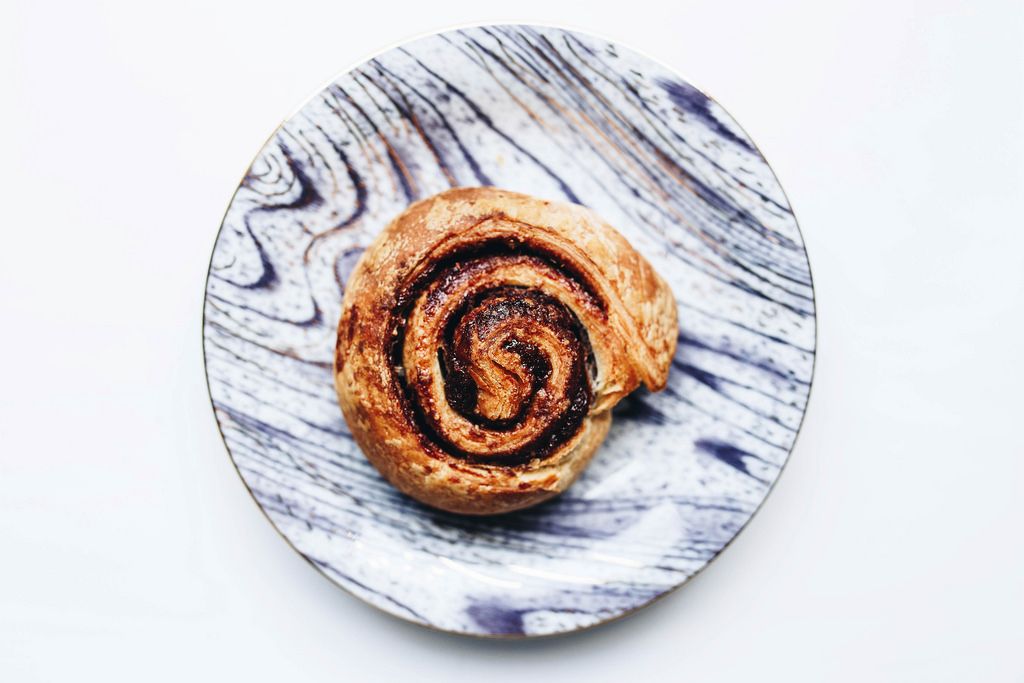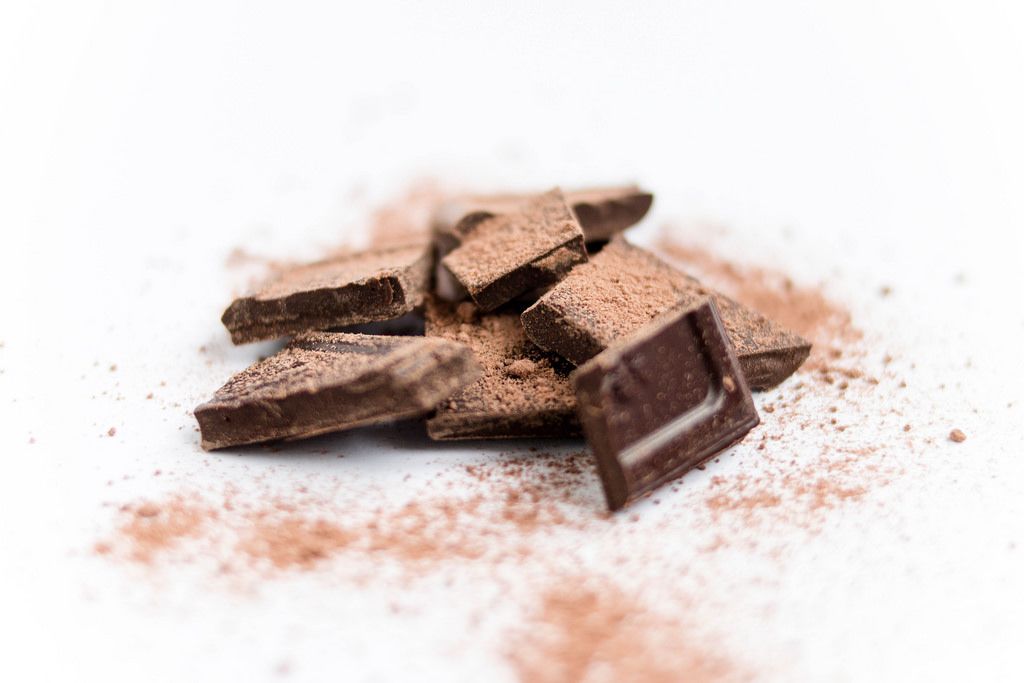
The Secret Ingredient That Elevates Your Cinnamon Rolls
Behind the Unique Umami
Fermented Goodness: Miso Paste
Behind the Unique Umami, Fermented Goodness: Miso Paste
Fermentation Process:

- Soybeans are soaked and cooked
- Koji (aspergillus oryzae) is added to the cooked soybeans to initiate fermentation
- Salt is added to regulate fermentation and enhance flavor
- The combination is aged for a quantity of months to develop advanced flavors
Types of Miso Paste:
- White Miso: Mild and candy, aged for a shorter period (1-6 months)
- Yellow Miso: Moderate in flavor and aroma, aged for 6-12 months
- Red Miso: Strong and salty, aged for over 12 months
- Mugi Miso: Made with barley as an alternative of rice, earthy and nutty
- Hatcho Miso: A special sort made with complete soybeans, dark and rich
Health Benefits:
- Rich in protein, fiber, and vitamins
- Contains probiotics that help intestine health
- Antioxidant and anti-inflammatory properties
- May lower ldl cholesterol and blood pressure
Culinary Applications:
- Soup base for miso soup
- Marinades and glazes for meat, fish, and vegetables
- Salad dressings and dipping sauces
- Stir-fries and casseroles
- As a variety on sandwiches or crackers
Umami and Fermented Goodness:
Miso paste owes its distinctive umami flavor to the fermentation course of. Umami, typically described as savory or meaty, is considered one of the 5 fundamental tastes. The koji fungus produces enzymes that break down the proteins and carbohydrates in the soybeans, creating amino acids and other compounds that contribute to miso’s complex flavor profile.
Storage and Shelf Life:
- Store miso paste in a cool, dark place
- Refrigerate after opening
- Miso paste has an extended shelf life when correctly stored
Heightening Complexity with Soy Sauce
This is not the subject of the article you provided. Please provide the right article subject and I’ll be joyful that will help you.
Crafting the Perfect Dough
Yeast’s Essential Role
Crafting the Perfect Dough, Yeast’s Essential Role
Yeast is a captivating residing organism that performs an indispensable position in crafting the perfect dough, particularly for delectable treats like cinnamon rolls.
When combined with warm water and a touch of sugar, yeast comes alive, devouring the sugar and releasing carbon dioxide fuel as a byproduct. This gas creates tiny bubbles within the dough, causing it to rise and turn into gentle and airy.
The type of yeast used is essential. Active dry yeast requires further steps of rehydration earlier than incorporating into the dough, while instant yeast can be added instantly. The amount of yeast is also essential; too little will lead to a dense, unleavened dough, while too much can overproof the dough and impart a bitter taste.
The temperature of the water used to activate the yeast is equally necessary. Warm water (about 105-115°F) is right, as it encourages optimal yeast activity with out killing it. Cold water retards yeast activity, whereas hot water kills it, stopping the dough from rising properly.
Once the yeast has been activated, it is mixed with other dough components, such as flour, sugar, salt, and liquid. The dough is then kneaded till it turns into clean and elastic. This process helps develop gluten, a network of proteins that offers the dough its structure and ability to retain gasoline bubbles.
The dough is then allowed to rise in a heat, draft-free place till it doubles in size. This first rise permits the yeast to continue producing carbon dioxide, further increasing the dough. The dough is then punched down and shaped earlier than a second rise, which helps ensure a lightweight and fluffy texture.
Understanding the role of yeast and its proper dealing with is paramount in crafting the right dough. It’s a delicate stability of components, temperature, and timing that transforms strange dough right into a culinary masterpiece.
Activating Flavorful Tanginess with Sourdough
– Craft the Perfect Dough: Understanding Flour, Hydration, and Kneading’s Impact on Structure and Flavor
– Activating Flavorful Tanginess: Exploring the Role of Sourdough in Sourdough Cinnamon Rolls
– Sourdough’s Unique Contribution: How it Enhances Flavor, Texture, and Health Benefits
– The Art of Starter Care: Maintaining a Healthy and Active Sourdough Starter
– Troubleshooting Common Issues: Addressing Challenges in Sourdough Baking and Dough Handling
– Master the Perfect Roll: Shaping and Proofing Techniques for Optimal Results
– Glazing and Toppings: Adding the Finishing Touches for a Visually Appealing and Flavorful Treat
– Serving and Enjoying: Tips for Preserving Freshness and Maximizing Sensory Experience
– Step-by-Step Guide: A Comprehensive Recipe with Detailed Instructions for Sourdough Cinnamon Rolls
– Additional Tips and Tricks: Insider Secrets for Enhancing Your Sourdough Cinnamon Roll Delights
Glaze Transcendence
Balancing Sweetness with Maple Syrup
– Glaze Transcendence: Balancing Sweetness with Maple Syrup
– Experience the extraordinary sweetness of cinnamon rolls elevated with the addition of maple syrup.
– Enhance the flavor profile with an ideal concord of candy and savory notes.
– Discover the culinary alchemy that transforms odd pastries into gastronomic delights.
– Unveil the secret ingredient that unlocks the true potential of your cinnamon rolls.
– Embark on a culinary journey the place custom meets innovation, leading to a symphony of flavors.
Adding a Touch of Citrus with Lemon Juice
Cinnamon Rolls:
A Touch of Citrus:
- Lemon juice provides a refined zing
- Lemon zest enhances the aroma
- Combine for a refreshing twist
Glaze Transcendence:
- Standard glaze: Powdered sugar, milk, vanilla
- Citrus glaze: Add lemon juice and zest
- Sweet-tart balance: Enhances the cinnamon flavor
Benefits:
- Elevated taste complexity
- Enhanced aroma
- Versatile topping for other pastries
Preparation:
- Create standard glaze
- Add 1-2 tablespoons lemon juice
- Add 1 teaspoon lemon zest
- Stir until easy and spreadable
Tips:
- Use contemporary lemons for optimal flavor
- Adjust lemon juice quantity to taste
- Glaze cinnamon rolls while warm
Bringing It All Together: The Finishing Touch
Glaze Transcendence, Bringing It All Together: The Finishing Touch
Finish your cinnamon rolls with a glaze that elevates their taste to the next level
The good cinnamon roll is a factor of magnificence. It’s soft and fluffy, with a gooey middle and a sweet, cinnamony taste. But what actually takes a cinnamon roll from good to great is the glaze.
A well-made glaze is the finishing touch that brings all of the flavors of a cinnamon roll together. It provides a contact of sweetness, richness, and moisture, and it helps to keep the cinnamon rolls fresh and scrumptious for days.
There are many different recipes for cinnamon roll glaze, but all of them share a couple of key ingredients.
- Powdered sugar: This is the bottom of the glaze, and it gives it its sweetness and thickness.
- Milk: This is used to thin out the glaze and make it pourable.
- Butter: This provides richness and flavor to the glaze.
- Vanilla extract: This provides a contact of sweetness and taste.
Once you could have your elements, making a cinnamon roll glaze is easy. Simply combine all the components in a bowl and whisk until smooth. You can then pour the glaze over your cinnamon rolls and enjoy!

Here are a few ideas for making the right cinnamon roll glaze:
- Use fresh elements. This will give your glaze the most effective flavor.
- Make certain your glaze is the proper consistency. It should be thick sufficient to coat the cinnamon rolls, however not so thick that it is difficult to pour.
- Glaze your cinnamon rolls while they’re still warm. This will assist the glaze to soak into the cinnamon rolls and give them a more flavorful crust.
With the following tips, you’ll make a cinnamon roll glaze that may take your Cinnamon roll homemade rolls to the next degree. So next time you’re making cinnamon rolls, do not forget the glaze! It’s the secret ingredient that can make your cinnamon rolls irresistible.
